Input interpretation

dimethylbenzene
Chemical names and formulas
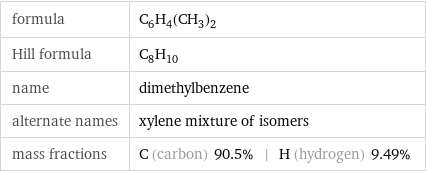
formula | C_6H_4(CH_3)_2 Hill formula | C_8H_10 name | dimethylbenzene alternate names | xylene mixture of isomers mass fractions | C (carbon) 90.5% | H (hydrogen) 9.49%
Lewis structure

Draw the Lewis structure of dimethylbenzene. Start by drawing the overall structure of the molecule, ignoring potential double and triple bonds: Count the total valence electrons of the carbon (n_C, val = 4) and hydrogen (n_H, val = 1) atoms: 8 n_C, val + 10 n_H, val = 42 Calculate the number of electrons needed to completely fill the valence shells for carbon (n_C, full = 8) and hydrogen (n_H, full = 2): 8 n_C, full + 10 n_H, full = 84 Subtracting these two numbers shows that 84 - 42 = 42 bonding electrons are needed. Each bond has two electrons, so in addition to the 18 bonds already present in the diagram add 3 bonds. To minimize formal charge carbon wants 4 bonds. Identify the atoms that want additional bonds and the number of electrons remaining on each atom: Fill in the 3 bonds by pairing electrons between adjacent highlighted atoms. Note that the six atom ring is aromatic, so that the single and double bonds may be rearranged: Answer: | |
3D structure
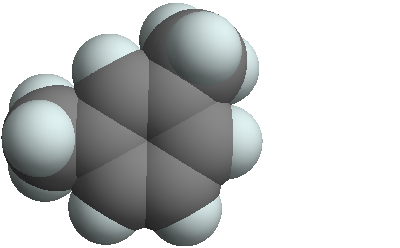
3D structure
Basic properties
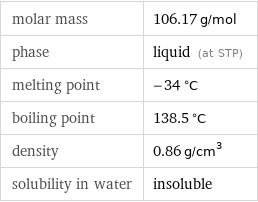
molar mass | 106.17 g/mol phase | liquid (at STP) melting point | -34 °C boiling point | 138.5 °C density | 0.86 g/cm^3 solubility in water | insoluble
Units

Liquid properties (at STP)
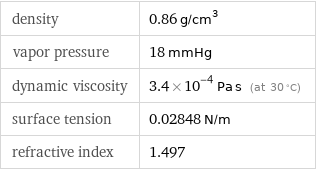
density | 0.86 g/cm^3 vapor pressure | 18 mmHg dynamic viscosity | 3.4×10^-4 Pa s (at 30 °C) surface tension | 0.02848 N/m refractive index | 1.497
Units

Thermodynamic properties

critical temperature | 616 K critical pressure | 3.51 MPa (at STP)
Chemical identifiers
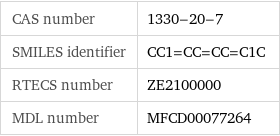
CAS number | 1330-20-7 SMILES identifier | CC1=CC=CC=C1C RTECS number | ZE2100000 MDL number | MFCD00077264
NFPA label

NFPA label

NFPA health rating | 2 NFPA fire rating | 3 NFPA reactivity rating | 0
Safety properties
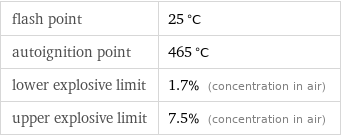
flash point | 25 °C autoignition point | 465 °C lower explosive limit | 1.7% (concentration in air) upper explosive limit | 7.5% (concentration in air)

DOT hazard class | 3 DOT numbers | 1307
Toxicity properties

RTECS classes | agricultural chemical and pesticide | tumorigen | mutagen | reproductive effector | human data | primary irritant